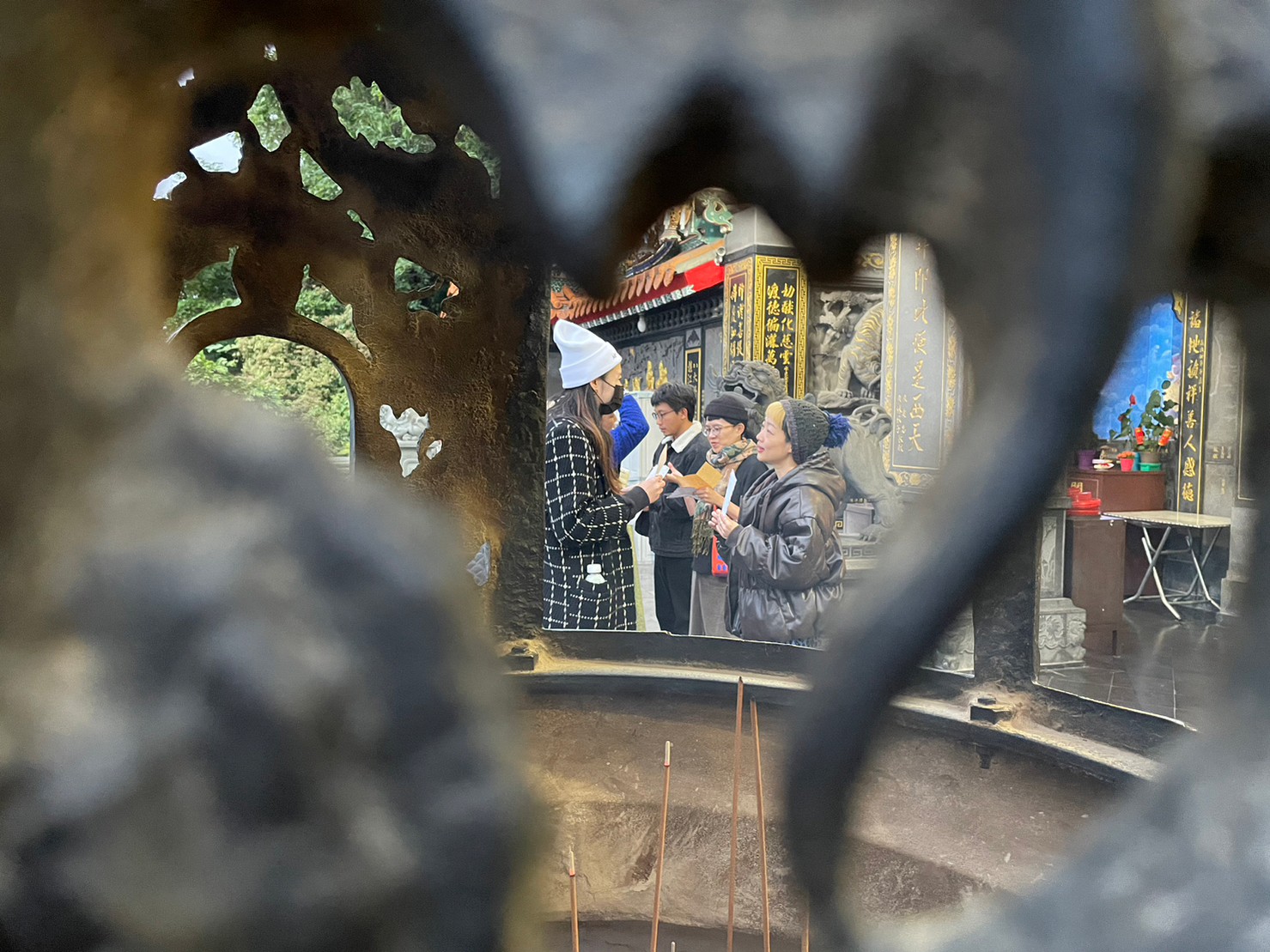A Field Guide for Weathering: detours of mundane
Developed by “The Weathering Collective,” “A Field Guide for Weathering: Embodied Tactics for Collectives of Two or More Humans” was co-written by Jennifer Mae Hamilton and Astrida Neimanis. WU Ren-Yu and Hsu Shih-Yu introduced the guide to the Chinese audience and hosted workshops in various locations, including markets in Taichung, Taipei Dangdai Art & Ideas, the intertidal zone in Kinmen, and the Children’s Museum of Arts in Taoyuan. They practiced the experience of weathering with diverse participants. The format presented at Solid Art in Taipei was adapted from the versions mentioned above.
“Ten million years ago, the island of Luzon in the Philippines began moving northwestward until it collided with the southeastern part of the Eurasian continental plate. This collision led to the emergence of Taiwan Island and the formation of mountain ranges on it, a process known as the Penglai Orogeny. The terrain of Taiwan Island rose as its crust folded and deformed, and its land underwent erosion and accumulation through the movements of rivers. This geological activity resulted in the formation of the alluvial plain in the west that we find today.
…
Three million years ago, the Luzon volcanic island in the core of the Eastern Coast Mountains gradually merged with the Central Mountains, forming the East Longitudinal Valley, which became the suture of the two major plates. As the Philippine Sea Plate moved northwestward and subducted under northern Taiwan Island near the Ryukyu Islands, the Ryukyu Island was formed. Since 2.8 million years ago, it has intermittently been located in Datun Mountain, Keelung Island, and Mianhua Island in Taiwan. Large-scale volcanic eruptions occurred in offshore areas and continued until 200,000 years ago.” (Mei-Chuan Huang, 2018)
Imagine where we are—amidst the magma accumulation resulting from 2.8 million years of mantle extrusion and volcanic eruptions. Both in terms of time and space, we find ourselves near the Taipei Lagoon and Guandu Wetland. As we withdraw inward, we encounter the Tamsui River, Zhonggang Creek, Keelung River, and the Tidal Barrier.
Returning to this modern building situated by the river, resting on the cooled lava of an ancient volcanic mountain, you share the space with numerous individuals. The modern infrastructure within these buildings ensures comfortable conditions in terms of temperature, humidity, lighting, and hygiene. Do you happen to know the route to the nearest mountaintop? And, have you considered the duration it takes to walk to the nearest river?






